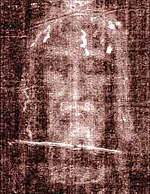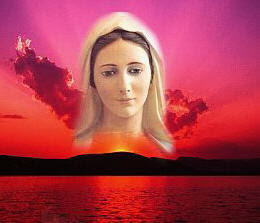 |
| English: John Chrysostom, icon by Dionisius Русский: (Photo credit: Wikipedia) |
Tribulation Times
September 14, 2016 FEAST OF THE EXALTATION OF THE CROSS
(1Co 1:17-18) For Christ sent me not to baptize, but to preach the gospel: not in wisdom of speech, lest the cross of Christ should be made void. For the word of the cross, to them indeed that perish, is foolishness: but to them that are saved, that is, to us, it is the power of God.
HOMILY by St John Chrysostom: Adam and Christ, Eve and Mary
Have you seen the wonderful victory? Have you seen the splendid deeds of the Cross? Shall I tell you something still more marvellous? Learn in what way the victory was gained, and you will be even more astonished. For by the very means by which the devil had conquered, by these Christ conquered him; and taking up the weapons with which he had fought, he defeated him. Listen to how it was done.
A virgin, a tree and a death were the symbols of our defeat. The virgin was Eve: she had not yet known man; the tree was the tree of the knowledge of good and evil; the death was Adam’s penalty. But behold again a Virgin and a tree and a death, those symbols of defeat, become the symbols of his victory. For in place of Eve there is Mary; in place of the tree of the knowledge of good and evil, the tree of the Cross; in place of the death of Adam, the death of Christ.
Do you see him defeated by the very things through which he had conquered? At the foot of the tree the devil overcame Adam; at the foot of the tree Christ vanquished the devil. And that first tree sent men to Hades; this second one calls back even those who had already gone down there. Again, the former tree concealed man already despoiled and stripped; the second tree shows a naked victor on high for all to see. And that earlier death condemned those who were born after it; this second death gives life again to those who were born before it. Who can tell the Lord’s mighty deeds? By death we were made immortal: these are the glorious deeds of the Cross.
Have you understood the victory? Have you grasped how it was wrought? Learn now, how this victory was gained without any sweat or toil of ours. No weapons of ours were stained with blood; our feet did not stand in the front line of battle; we suffered no wounds; witnessed no tumults; and yet we obtained the victory. The battle was the Lord’s, the crown is ours. Since then victory is ours, let us imitate the soldiers, and with joyful voices sing the songs of victory. Let us praise the Lord and say,
Death is swallowed up in victory.
O death, where is thy victory?
O death, where is thy sting?
The Cross did all these wonderful things for us: the Cross is a war memorial erected against the demons, a sword against sin, the sword with which Christ slew the serpent. The Cross is the Father’s will, the glory of the Only-begotten, the Spirit’s exultation, the beauty of the angels, the guardian of the Church. Paul glories in the Cross; it is the rampart of the saints, it is the light of the whole world.
OSV: Are These the Bloodstains of Jesus? The intriguing story of an ancient relic
September 14, 2016 FEAST OF THE EXALTATION OF THE CROSS
(1Co 1:17-18) For Christ sent me not to baptize, but to preach the gospel: not in wisdom of speech, lest the cross of Christ should be made void. For the word of the cross, to them indeed that perish, is foolishness: but to them that are saved, that is, to us, it is the power of God.
HOMILY by St John Chrysostom: Adam and Christ, Eve and Mary
Have you seen the wonderful victory? Have you seen the splendid deeds of the Cross? Shall I tell you something still more marvellous? Learn in what way the victory was gained, and you will be even more astonished. For by the very means by which the devil had conquered, by these Christ conquered him; and taking up the weapons with which he had fought, he defeated him. Listen to how it was done.
A virgin, a tree and a death were the symbols of our defeat. The virgin was Eve: she had not yet known man; the tree was the tree of the knowledge of good and evil; the death was Adam’s penalty. But behold again a Virgin and a tree and a death, those symbols of defeat, become the symbols of his victory. For in place of Eve there is Mary; in place of the tree of the knowledge of good and evil, the tree of the Cross; in place of the death of Adam, the death of Christ.
Do you see him defeated by the very things through which he had conquered? At the foot of the tree the devil overcame Adam; at the foot of the tree Christ vanquished the devil. And that first tree sent men to Hades; this second one calls back even those who had already gone down there. Again, the former tree concealed man already despoiled and stripped; the second tree shows a naked victor on high for all to see. And that earlier death condemned those who were born after it; this second death gives life again to those who were born before it. Who can tell the Lord’s mighty deeds? By death we were made immortal: these are the glorious deeds of the Cross.
Have you understood the victory? Have you grasped how it was wrought? Learn now, how this victory was gained without any sweat or toil of ours. No weapons of ours were stained with blood; our feet did not stand in the front line of battle; we suffered no wounds; witnessed no tumults; and yet we obtained the victory. The battle was the Lord’s, the crown is ours. Since then victory is ours, let us imitate the soldiers, and with joyful voices sing the songs of victory. Let us praise the Lord and say,
Death is swallowed up in victory.
O death, where is thy victory?
O death, where is thy sting?
The Cross did all these wonderful things for us: the Cross is a war memorial erected against the demons, a sword against sin, the sword with which Christ slew the serpent. The Cross is the Father’s will, the glory of the Only-begotten, the Spirit’s exultation, the beauty of the angels, the guardian of the Church. Paul glories in the Cross; it is the rampart of the saints, it is the light of the whole world.
OSV: Are These the Bloodstains of Jesus? The intriguing story of an ancient relic
EXCERPT CATHOLIC STRAIGHT ANSWERS: What is the Sudarium of Oviedo?
The sudarium is a linen cloth measuring 85.5 by 52.6 cm. (or 34 by 21 in.). It was wrapped around the head of an adult male who had a beard and mustache with his hair tied in the back. Blood stains are present, but no image appears.
The sudarium dates to the time of the Roman empire. The weave of the line uses a “Z twist,” indicating it was produced between 400 B.C. and 500 A.D. The Shroud of Turin uses the same “Z twist.”
Some 141 pollen grains and 10 fungus spores were discovered on the sudarium; 99 percent were endemic to the Mediterranean region. Three plant species were identified that grow only in Palestine — the terebinth, tamarisk and the batha oak. Two other native plant residues found were that of the “Rocks Rose” (Cistus creticus) and Goundelia tournefortii, which may have been used for Jesus’ crown of thorns. All of these can be found within a radius of 20 km. of Jerusalem and blossom in the spring (around Passover time). These pollens also appear on the Shroud of Turin; however, there are pollens of Spain found on the sudarium which do not appear on the shroud (which is kept in Milan) and vice versa.
Traces of myrrh and aloe were found. Remember: Nicodemus brought a mixture of myrrh and aloe for the burial of Jesus (Jn 19:39).
Two kinds of blood are on the cloth: First, around the nose and the mouth, there are traces of blood and other liquid from the pulmonary edema that was caused from asphyxia (the ultimate cause of death by crucifixion); this blood would have been discharged when the body was removed from the cross. Second, traces of blood around the head were found, caused by the crown of thorns. The blood stains of the sudarium and the shroud match. Also, the blood from both thesudarium and Shroud of Turin belonged to a male with type AB blood.
Finally, if the sudarium is placed on the facial image of the Shroud of Turin and the Veil of Manoppello (believed to be St. Veronica’s veil), it is apparent that all of them depict the image of the same man.
The sudarium is kept in a reliquary at the Cathedral of Oviedo. It is displayed three times a year: on the feast of the Exultation of the Holy Cross (Sept. 14), the feast of St. Matthew (Sept. 21) and Good Friday.
While belief in the authenticity of the sudarium as well as the Shroud of Turin and the Veil of Manoppello are not articles of faith, these relics aid our appreciation for what Our Lord suffered for our salvation and can only increase our devotion. We are left, then, with that great adage: “For those who believe, no explanation is necessary; for those who do not, no explanation is possible.”
REVIEW: The Sudarium of Oviedo and the Shroud of Turin
 |
| Русский: Спас Отпечаток лика Христа на Туринской плащанице (Photo credit: Wikipedia) |
PINTERIST: Close up of the Sudarium of Oviedo during the Exaltation of Holy Cross procession at the Cathedral of Oviedo Spain
Ladder of Divine Ascent excerpt: Step 7- "On Joy-Making Mourning"
17.
When they weep, some force themselves unseasonably to think of nothing
at all during this blessed time, not realizing that tears without
thought are proper only to an irrational nature and not to a rational
one. Tears are a product of thought, and the father of thought is a
rational mind.Prayer request? Send an email to: PrayerRequest3@aol.com
This month's archive can be found at: http://www.


No comments:
Post a Comment
Please no anonymous comments. I require at least some way for people to address each other personally and courteously. Having some name or handle helps.
Note: Only a member of this blog may post a comment.